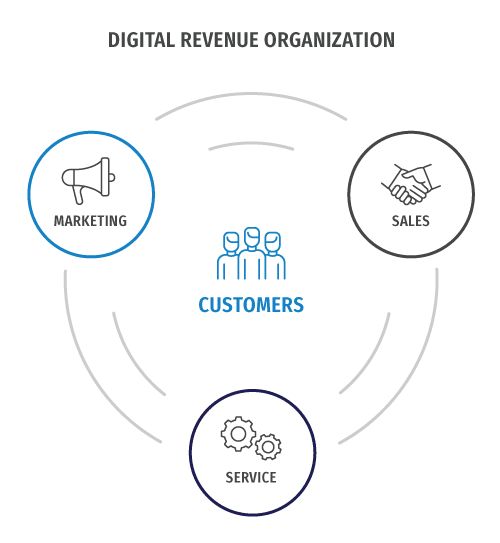Designing the Digital Operating Model

The current environment presents revenue leaders with an exciting opportunity to accelerate change.
Most revenue organizations, including downstream marketing, sales and service teams, have been forced to work remotely and become creative with how they capture mindshare, source new opportunities and progress in-flight expansion efforts. Marketing events are now virtual. Career sellers are expanding usage of CRM and reporting visualization tools, along with capitalizing on the breadth of readily accessible collaboration methods. Service organizations are dispelling myths about customer’s lack of willingness to engage in virtual demos and technical support.
Revenue leaders are leveraging data and technology to preserve momentum amid headwinds. Without knowing it–organizations designed the Digital Operating Model. Many are implementing leading digital practices, scaling virtual mechanisms that were only recently in planning or pilot phases.
Forward thinking revenue leaders will continue to capitalize on the current catalyst. The digital revenue motions of the last several months will become a permanent part of their go-to-customer model.
What permanent changes might we see?
- Marketing–Marketing managers will become digital marketing managers. Demand for content specialists will rapidly accelerate as businesses attempt to be the “signal in the noise.” Field marketing budgets will be shifted towards a digital blend–virtual events, social, programmatic, SEO, SEM, and others.
- Sales–New channels will be launched and legacy roles will permanently evolve. Those late to e-commerce will find their digital story. They may tap into 3rd party channel partner platforms or begin with small scale platforms like Try and Buy or Freemium options. Traditional sales jobs will rapidly evolve. Field sellers will become hybrid–spending as much or more time engaging with customers via social, text and video as they once did via phone or in-person. Inside Sales will be renamed “Digital Sales” as the role becomes better codified and informed by data and technology.
- Service–Large investments will be made in self-service platforms to gain scale and align with customer preferences. Self-service portals will become common place. They will feature regular curated multi-media content aimed at helping customers realize the most value from their purchase. Service organizations will direct customers to these portals to take pressure off operations and reduce costs. Teams will be setting up high-end studios to support remote demos and virtual troubleshooting. Some are already testing augmented and virtual reality technical support platforms. These experiences will be delivered at such a high quality, that customers will view in-person engagement as inconvenient and unnecessary.

The seeds of the Digital Operating Model have been sown. The coming months will produce a new crop of digital revenue motions and coverage models. Those that build on the momentum will reap the benefits. They will accelerate growth and gain share that will be difficult to win back.